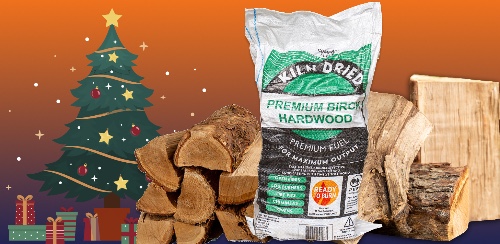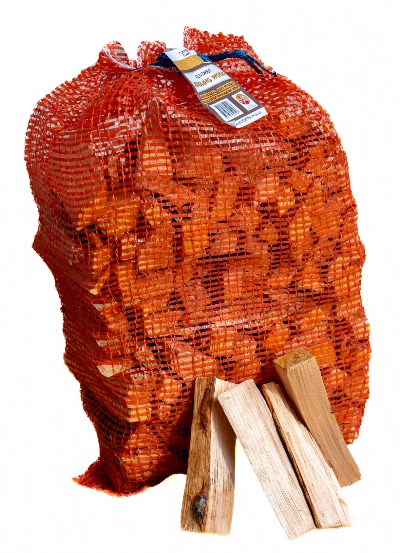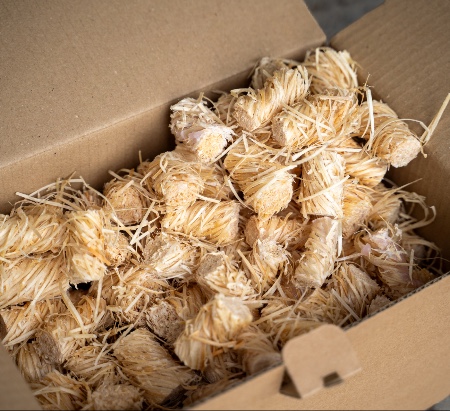How is Smokeless Coal made?
The key difference between conventional house coal and smokeless coal is Anthracite, which is a specific coal type classified by its high carbon content, low impurities, and unique geological formation. Coal types are generally classified based on their composition, coalification process, and the presence of impurities, resulting in different forms such as lignite, bituminous, and anthracite.
Anthracite AKA hard coal or black coal is mega hard, mega compact and very dense. Anthracite possesses the highest carbon content, the least amount of impurities, and the highest energy density of all types of coal. Its chemical structure is more ordered and contains fewer volatile compounds compared to other coal types, making it ideal for clean-burning applications.
Just to make things super clear: The base of smokeless coal is Anthracite. This means that it contains fewer volatile compounds and has a higher carbon density.
Smokeless Coal is made by mixing Anthracite and other natural binding agents into a very fine powder. The mixture is then heated and pressed at very high pressures in specially designed moulds to form the final product. Different forms of coal, such as bituminous or sub-bituminous, are less suitable for this process due to their higher impurity content and lower carbon density.
When you put all these elements together, you get a smokeless coal that emits roughly 80% less smoke than conventional coal.
Many people wrongly believe that smokeless coal must be highly synthesised and pumped full of chemicals to get a smoke free burn. This is a myth. Smokeless Coal is actually a natural product.
Basically, it is made from an alternate anthracitic carbon base, so Smokeless Coal has a high amount of Anthracite which is a naturally occurring coal already being mined.
The Anthracite that we sell is still mined in the UK, it’s the last pit in the UK and is owned by our supplier.
Gasification is another process used in the coal industry, where coal is heated and reacted with oxygen and steam to convert it into gases and chemical products. Compared to charcoal, which was historically used as a primary fuel for metallurgy and cooking before the widespread adoption of mineral coal, smokeless coal offers a modern, efficient alternative. Its clean-burning properties also make it suitable for use in boilers, reducing emissions and improving efficiency.
Why should I use smokeless coal?
Smokeless Coal is more environmentally friendly than conventional house coal.
It has 80% less smoke, and up to about 20% less carbon dioxide – not to mention lower overall emissions and fewer internal volatile components.
Now, greener fuel doesn’t mean compromise. In fact, the opposite is true. Top performance is a given; thanks to smokeless coal’s Anthracitic base.
Basically, smokeless coal is burned both longer and hotter than traditional coal, producing an epically long 5-6 hour burn time in standard fire tests, as well as increased temperatures too. When smokeless coal is burned at these higher temperatures, it results in a more efficient and cleaner burn.
Thanks to the higher carbon density, you can also enjoy less ash, making clean up a breeze. To summarise, smokeless coal produces little if no toxic smoke, plus it guarantees a higher heat output and an increased burn time. Less fly ash and other waste products are produced compared to traditional coal. The reduction of fly ash and other waste products, such as coal ash, means there is less risk of environmental contamination and easier disposal.
This all adds up to more efficiency and ultra efficient fuels reduce our carbon footprint. There is also potential for co-firing smokeless coal with biomass, which can further reduce emissions and improve thermal efficiency.
Looking for more versatility form your fuel?
You can burn smokeless coal in a wide range of appliances from fireplaces and multi-fuel stoves to room heaters. Smokeless Coal does burn hotter and leaves less ash than traditional house coal.
Therefore it’s far better for the environment. Additionally, smokeless coal can be delivered straight to your door, making it convenient to obtain.
Smokeless Fuels
Smokeless fuels are a cleaner and more efficient alternative to traditional coal or wood.
They are approved for use in smoke control areas, making them an ideal choice for urban areas where air pollution is a concern.
These fuels offer high heat output and extended burning times, ensuring your home stays warm and cozy for longer periods.
Additionally, smokeless fuels leave behind very low ash residue, reducing the need for frequent cleaning and making maintenance a breeze.
Burning smokeless coal produces fewer harmful gases, such as carbon monoxide and other pollutants, compared to traditional coal. In power plant applications, smokeless fuels can help reduce emissions and improve overall efficiency, especially when combined with technologies like carbon capture and storage. Advanced processes like coal gasification can also produce hydrogen from smokeless coal, providing a clean energy source for chemical production and fuel synthesis.
Whether you’re looking to reduce your environmental impact or simply want a more efficient heating solution, smokeless fuels are a smart choice for any household.
Efficient and Convenient
Smokeless fuels are designed to provide an efficient and convenient heating solution.
They are suitable for use in multi-fuel stoves, open fires, and other heating appliances.
With their high heat output and extended burning times, smokeless fuels are perfect for households that want to stay warm and cozy without the hassle of frequent refueling.
Smokeless coal products, such as Homefire smokeless coal, are a popular choice among households.
They produce less CO2 compared to traditional coal and provide more heat, making them a sustainable option. In fact, switching to smokeless fuels can reduce carbon dioxide emissions by up to 1 tonne per megawatt-hour of energy produced, highlighting their lower emission intensity. Instant Light smokeless coal is another popular option, igniting quickly and providing a convenient heating solution.
Burning Coal Through the Night to Stay Warm
Keeping your fire burning overnight using smokeless coal requires careful preparation and attention to detail. Start by loading your fire exclusively with smokeless coal, avoiding the temptation to overload the firebox.
Overloading can stifle the fire or lead to uneven burning. Once the fire is established, reduce the air supply to a minimal trickle, but keep the vents beneath the fuel bed open to ensure proper airflow. This balance is essential for maintaining a steady, slow burn through the night.
When loading the stove, leave sufficient space between the top of the fuel and the baffles. This space allows heat and air to circulate properly, preventing the fire from being smothered.
Another helpful trick is to use a thin layer of ash from the ash pan as an insulator. The ash can help sustain the fire's heat; however, avoid overloading the coals, as this may extinguish the flames. This process often involves trial and error to find the right balance for your particular stove.
It is crucial to check your stove's manual to confirm whether it is designed for overnight burning. Some stoves are not built for prolonged use without active tending. If the information is unclear, consider contacting the stove's manufacturer for guidance.
Burning your fire overnight safely also requires a working carbon monoxide alarm in the room where the stove is installed. Solid fuel stoves, while efficient, can be hazardous if not installed or maintained correctly. A carbon monoxide alarm provides a critical safeguard against the potential dangers.
Regular maintenance is also key to ensuring optimal stove performance. Remove and clean the baffle plate monthly to improve the burn rate and maintain efficiency. Empty the ash tray daily to prevent clogging, and clean the stove's glass with old newspaper to remove soot buildup. Keeping the glass clean not only improves visibility but also helps monitor the fire's condition.
Chimney sweeping should not be overlooked, as it is essential for safety and performance. For most users burning appropriate smokeless fuels, an annual sweep suffices. However, if you occasionally burn wood that is not kiln-dried or coal that is not approved, consider sweeping the chimney every three to four months to prevent blockages and maintain safety.
Finally, to keep your stove burning overnight with smokeless coal, avoid mixing in wood. Wood burns faster than smokeless coal, making it nearly impossible to maintain an overnight burn. Stick to smokeless coal exclusively for a steady and prolonged fire, ensuring a warm start to the next day.
Health Effects of Smokeless Coal
The health impacts of coal use have long been a concern, particularly for those working in coal mines and for communities living near areas of heavy coal production. Traditional coal mining and combustion release coal dust and a range of emissions that can contribute to respiratory problems, heart disease, and other serious health issues. Coal miners, in particular, face increased risks due to prolonged exposure to coal dust and other byproducts of mining and extraction processes.
Smokeless fuels, however, offer a safer alternative for both workers and end users. When used in multi fuel stoves and modern heating appliances, smokeless coal produces significantly less coal dust and fewer harmful emissions compared to traditional coal.
This reduction in air pollution leads to improved air quality, especially in urban environments where large quantities of coal have historically contributed to smog and health problems. The World Health Organization (WHO) has highlighted the importance of clean fuels in reducing the risk of respiratory diseases and other health conditions linked to poor air quality.
In addition to reducing airborne pollutants, smokeless coal also limits the release of toxic trace elements, such as mercury and arsenic, which can be present in some coal types. By choosing smokeless fuels and supporting safer coal production practices, customers can help minimize the health risks associated with coal use, both in their homes and in the wider community. As the coal industry continues to adapt, the move towards cleaner, more efficient fuels is essential for protecting public health and ensuring a safer future for everyone involved in the coal supply chain.
Towns we Deliver To
We actually deliver anywhere in Cornwall and Plymouth. However, these are some of the towns we do visit very regularly with coal:
- Truro
- Plymouth
- Newquay
- St Austell
- Penzance
- Camelford
- Liskeard
- Redruth
- Helston
- Falmouth
- Padstow
- Camborne
- Bodmin
- Hayle
- Bude
- Launceston
- St Ives
Global Coal Facts and Environmental Considerations
Coal has long been a staple energy source, powering homes and industries for centuries. Its widespread usage has shaped economies and societies, with historical and current usage patterns showing coal's significant role in power generation and industrial processes. However, traditional coal presents challenges such as air pollution, carbon monoxide emissions, and environmental degradation. In fact, coal is the single largest contributor to global CO2 emissions from fossil fuels, making it a major driver of climate change.
Globally, coal remains a key player in energy production. China, in particular, is a major force in coal production and consumption, significantly impacting global coal markets and contributing to both economic growth and environmental concerns.
The shift towards cleaner alternatives has led to the rise of smokeless fuels. These fuels are not only environmentally friendly but also a cost effective choice for consumers, as they reduce fuel consumption and save money over time. Their efficient burn and lower emissions make them a smarter option for those looking to minimize costs while maintaining performance.
Smokeless fuels have become increasingly popular, especially in areas with strict air quality regulations. They provide better value for money thanks to their drier, cleaner composition, resulting in more efficient fuel usage and a hotter, cleaner burn.
Coal has played a pivotal role in human history, powering everything from steam engines to modern power plants. As a fossil fuel, coal has been a cornerstone of global energy production for centuries, with coal mining and coal production supporting economies and communities around the world.
However, the widespread use of traditional coal has also brought significant challenges, including air pollution, carbon monoxide emissions, and the release of coal dust into the environment. These issues have raised concerns about the impact of coal on air quality and public health.
In response to these challenges, there has been a growing shift towards smokeless fuels, especially in cities and smoke control areas where air pollution is a major concern. Smokeless fuels, such as anthracite coal, offer a cleaner and more efficient alternative to regular coal.
With a higher heat output and fewer emissions, smokeless fuels produce less smoke and reduce the amount of harmful pollutants released into the air. This makes them an increasingly popular choice for both households and industries seeking to balance energy needs with environmental responsibility.
As coal production and mining continue to evolve, the development and use of smokeless fuels represent a significant step forward in reducing pollution and improving air quality, while still providing the reliable heat and energy that coal has delivered for generations.
Helpful links:
- Which Type of Kiln Dried Firewood is Right For You? A Buyer’s Guide
- Kiln Dried Firewood Delivery
- Firewood Helping to Keep Fuel Bills Down
- Woodsure Approved Ready To Burn
- Burning mixed Wood, Coal and Smokeless fuel can seriously damage your flue liner
- Quality Assured Kiln Dried Firewood
- A Practical Guide to Burning Wood and other Fuels on Open Fires and Stoves
- The Dangers of Burning Wet Wood
- The Future of Log Transportation
- A Guide to Quality Firewood
- Where Does Kiln Dried Firewood Come From? A Sustainable Sourcing Guide
- Pizza Oven Kiln Dried Firewood
- How to light a fire in your wood burning stove
- How to Store Kiln Dried Logs
- How much wood do you need to burn through winter?
- Hardwood Logs
- Pizza Cooking Wood FAQ
- Hardwood Logs for Pizza Ovens









